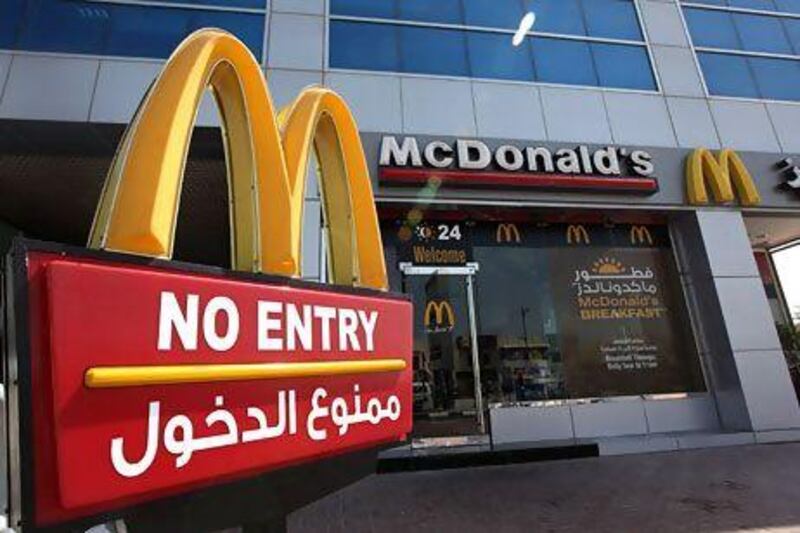McDonald’s will display the calorie information of its products on the packaging of all food sold across the GCC.
The move, which is designed to improve corporate transparency, means nutritional information is now available in the region online, on the back of paper tray covers and even via a mobile phone app – virtually everywhere but the menu order boards in the restaurants.
The decision to display the calories, protein, carbohydrates, total fat and salt on packaging was part of a “phased approach”, said Yousif Abdulghani, the managing director of McDonald’s Middle East and Africa, yesterday at an event to announce the initiative in Dubai.
“In 2002 we started to provide nutrition information on tray mats and in-store flyers so that our customers had access to detailed information about all food served at McDonald’s restaurants in the Middle East,” he said.
The company made the information available online at McDonaldsarabia.com in 2005, and last year it added a nutrition calculator to the website.
When asked why the chain had not made the information available on menu boards as it had in other countries including the United Kingdom, Mr Abdulghani said the company was looking at “enhancing the initiative as we go”.
“If you look back at McDonald’s globally when they started this initiative they did it also in phases,” he said.
“I’m sure there will be a time when there will be other means and ways of informing customers. It’s not going to stop with what we present today, but is going to continue and hopefully you are going to see more of that.
The move will enhance the relationship McDonald’s has with its customers, who are hungry for more nutritional information and healthier options, he said.
The chain added salads to its menus to meet the growing demand and its restaurants now feature a wide selection of products. But fried food was still more popular, said Mr Abdulghani.
“What we are seeing in spite of these different varieties of options that we offer, that our customers still prefer our French fries, our customers prefer our chicken burgers, our nuggets and our beefburgers. We haven’t really seen that major shift, but the option is there.”
A Big Mac, according to the new label on the packaging, provides 527 calories, 28 grams of protein, 28g of total fat, 41g of carbohydrates and 1080mg of salt.
Retail analysts say the decision to display such nutritional information is in line with other activities in the market.
“There has been a whole lot of work done by regulatory agencies [about food labelling]. Supermarkets have already looked into different options themselves so it is part of a broader context,” said Richard Adams, the director at Acuity, Middle East.
McDonald’s, which recorded revenues of US$750 million (Dh2.75 billion) in the GCC last year, has a market share of 35 per cent in the fast-food sector and is growing 15 to 20 per cent year on year. Its 369 restaurants in the GCC serve almost 900,000 customers daily and it aims to reach 550 outlets by 2015.
[ gduncan@thenational.ae ]






